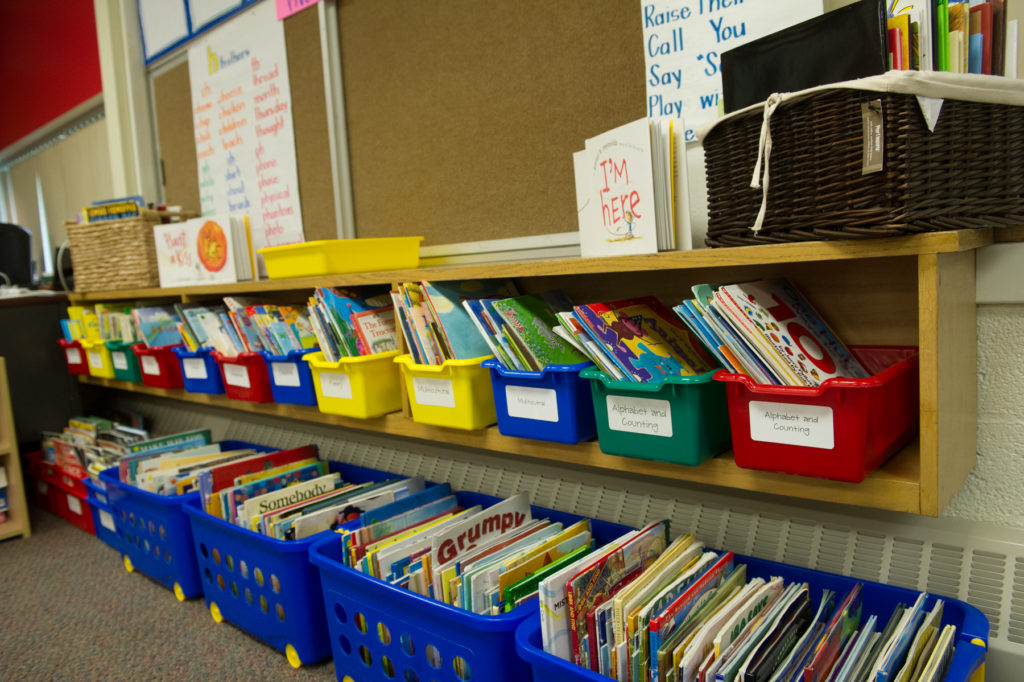I’m definitely doing this each year from now on! As the end of the first quarter of the school year rolled around, I reflected on the benefits I’d seen from involving students in building our classroom library and fully realized how amazing (and fun!) this project has been. I gave it a try this year because I felt I should, but from now on I’ll be doing it because I know it works and because students can learn so much from it. Here are some highlights:
- I noticed the community-building potential of this project early on, and that has continued to be a strong theme. Adding books to our library feels like a community celebration. The students get excited on days when a new box of books appears. There are gasps of excitement, delight, and recognition when the books inside are revealed, and the whole class discussions we’ve had have been wonderful. We talk about where books should go, what baskets to combine or rename—we vote, we debate. Students take turns making decisions and writing labels. It really feels like a whole-class project.
- Our library is much more connected with our learning this year. Although I started out giving students mixed boxes of books to sort and choose from, as the year progressed, I began introducing groups of books that connected to our curriculum, such as a box of folktales, myths, and fairy tales when I introduced the concept of genre; books related to ecosystems; atlases and geography books; and books by Kevin Henkes and Tomie DePaola for author studies. Introducing books for a purpose and then making a place for them in our library has made the children appreciate the role the library plays in their learning in a very different way.
- Opening the library slowly forced me to slow down, which is hard to do in the current mindset of pacing guides and testing schedules. I can’t believe that I still have seven boxes of books that haven’t been unpacked—or that I feel okay about that! This year I’ve taken more time introducing language arts concepts that I used to just throw out as “introductions,” and as a result, my students understand those concepts better. Every time I’ve wanted to speed up and just get it done, I’ve reflected on the benefits I’ve noticed from taking it slow: They pay more attention to the books when I bring them out box by box. They get more excited, and they really know what’s there. Bringing books out purposefully helps students think about how our library is growing and think critically of how to shift things around.
- This year the library, like the rest of our classroom, truly and completely belongs to my students. They don’t just put books back where they belong—they really understand it, because they have written all the labels, decided on categories to add and combine, and handled all the books. They’ve shared their ideas with me and with each other. I’m totally sold on this student-centered approach now—it has been so worthwhile to share responsibility for this part of our classroom!
Suzy Ghosh is a second grade teacher at Bush Hill Elementary school in Fairfax County, Virginia, and is also a Responsive Classroom consulting teacher.
